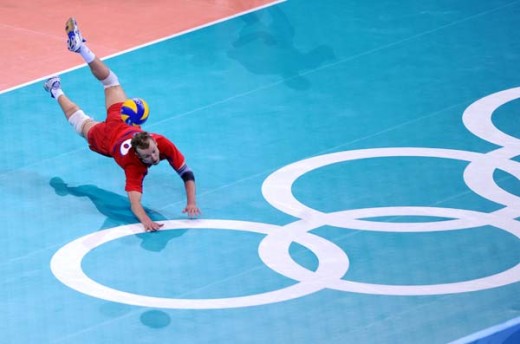
Volleyball
Torn rotator cuff injuries
The rotator cuff is a group of four muscles and their tendons that help in the movement and stability of the shoulder. Rotator cuff injuries cause shoulder pain and weakness and overhead arm movement is severely limited. Pain is worse at night. Symptoms of a torn rotator cuff are similar but more serious. A person experiencing these symptoms should see a doctor to determine if surgery is necessary. If large tears are not treated, they can develop into arthritis.
Surgical repair of the torn rotator cuff can be done with arthroscopy (a minimally invasive operation) and the patient usually goes home the same day. Following this, physiotherapy will help with pain management, restoring range-of-motion and for strengthening. Even with a normal rotator cuff injury, it is best to seek physiotherapy in order to return to volleyball with proper conditioning.
Dislocations
A sudden impact to the shoulder during play can cause a dislocation of the shoulder. When this happens, there is an extreme rotation of the upper arm bone (humerus) and the head pops out of the socket. Symptoms are shoulder pain, weakness, numbness and swelling. Once a fracture is ruled out, the doctor will relocate the bone through a procedure called a closed reduction. The arm is immobilised in a sling for several weeks, during which gentle passive range of motion exercises will be done (the physiotherapist moves the arm). After the sling is removed, a full rehabilitation program of stretching and strengthening exercises will begin.
Shoulder tendonitis, bursitis and impingement syndrome
These are volleyball injuries that may result from overuse. Tendonitis is inflammation of a tendon; bursitis is inflammation of the bursa – the fluid-filled sacs between the tendon and skin or tendon and bone. Tendonitis can lead to impingement syndrome as the muscles and tendons become inflamed and swollen. This swelling leads to the muscles and tendons becoming squeezed between the bones of the shoulder joint and the top of the shoulder blade. Repetitive overhead arm motions may irritate the muscles, tendons and tissues over time leading to inflammation and impingement.
Symptoms of this condition are slow onset of pain and shoulder or upper arm pain at night when lying on the affected side. Pain may also be felt with abduction of the arm (moving the arm out to the side) or raising the arm overhead. Shoulder pain at the front or the side is also common and may radiate down to the elbow and forearm. This is a sign that the biceps tendon (the one at the front of the shoulder that helps to bend the elbow and turn the forearm) may be affected.
Treatment involves rest, icing and the use of anti-inflammatory medications. Physiotherapy is needed to help return to volleyball. Please see us for an evaluation if you are experiencing any of these symptoms.